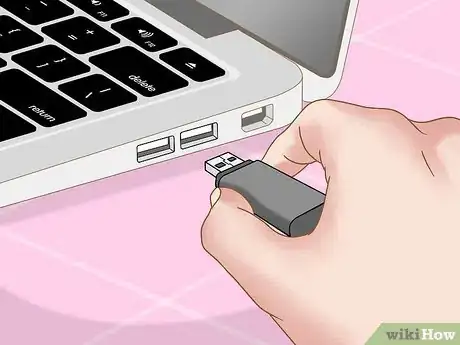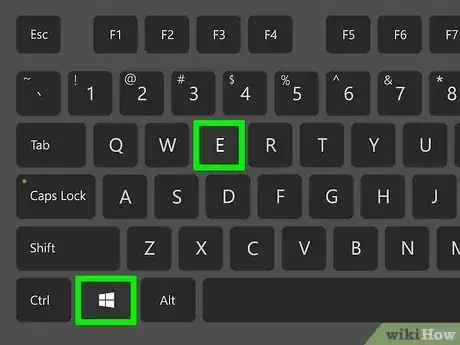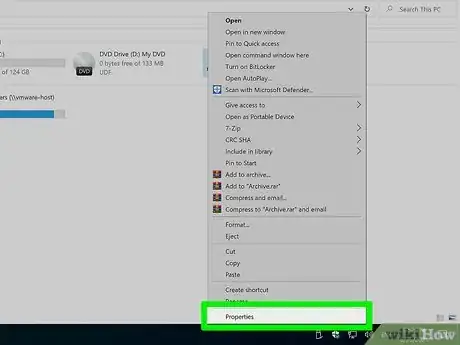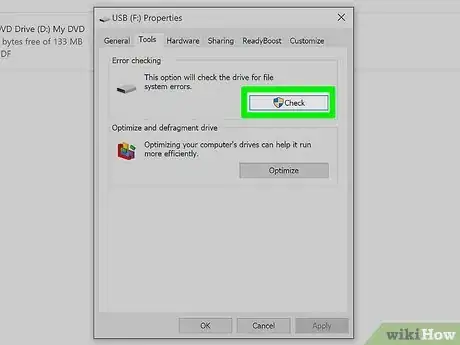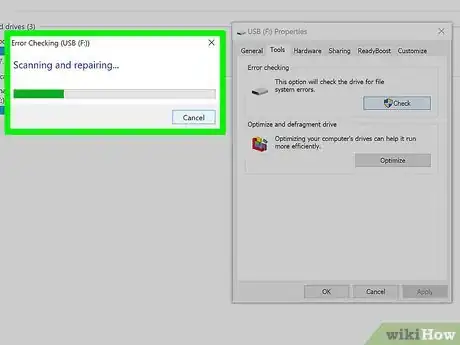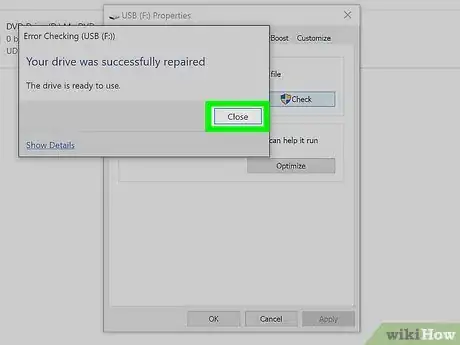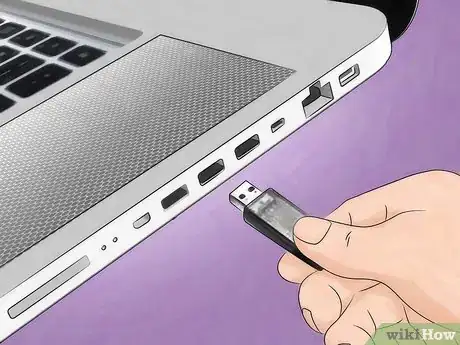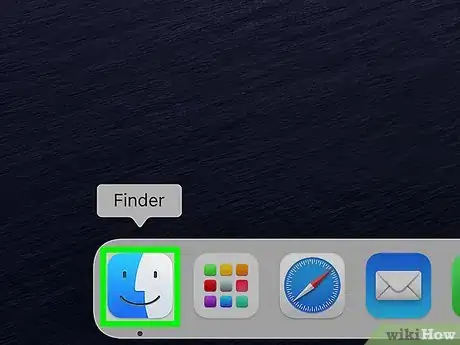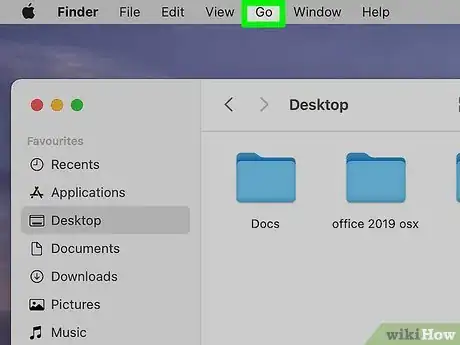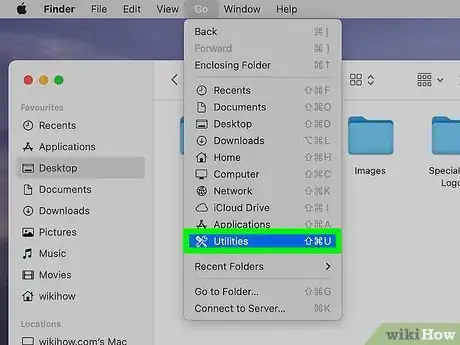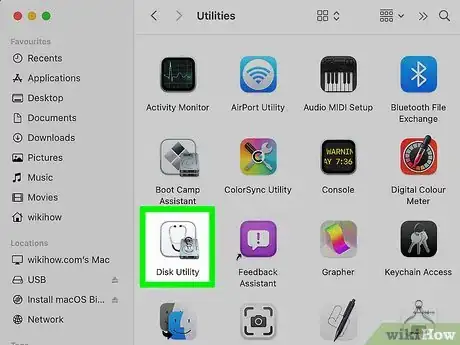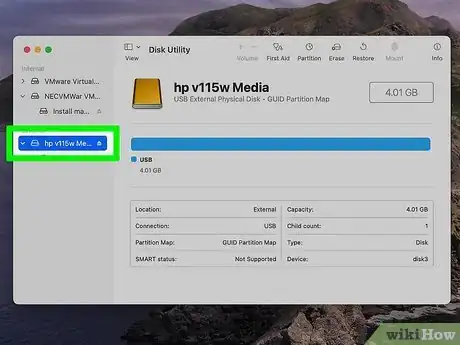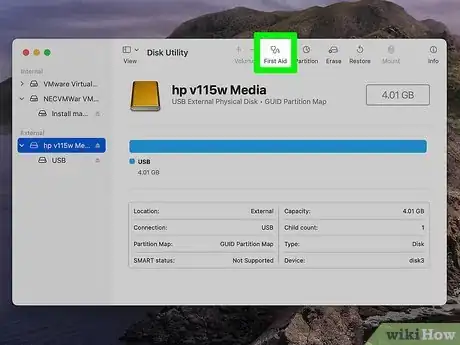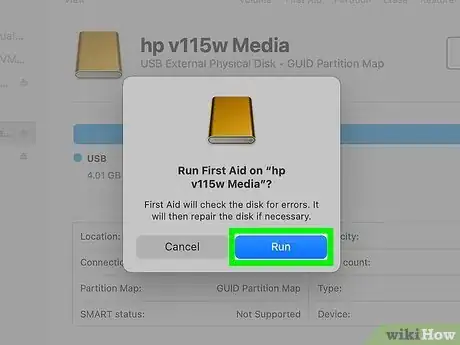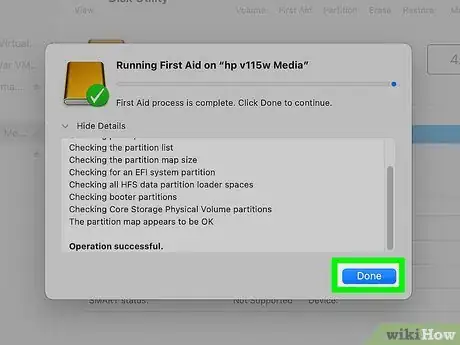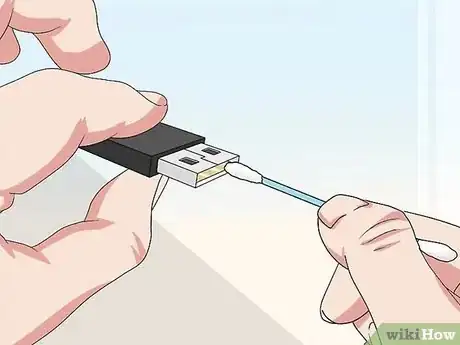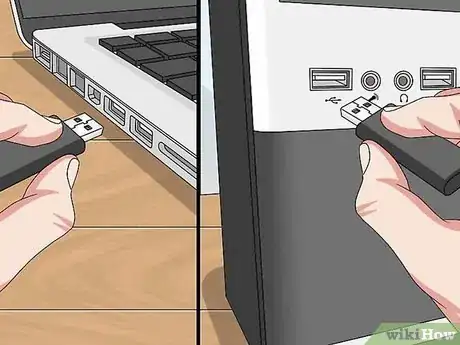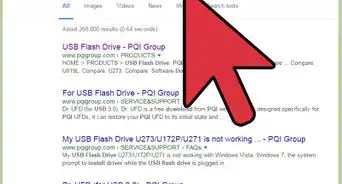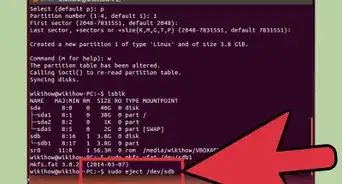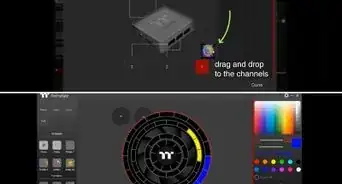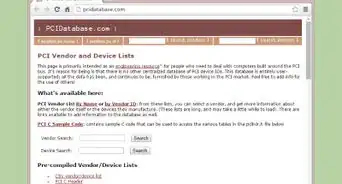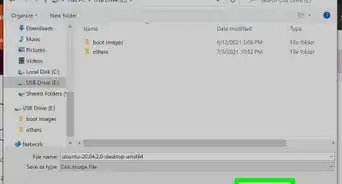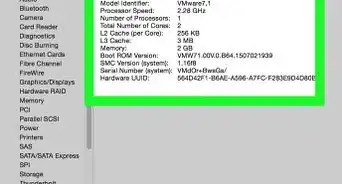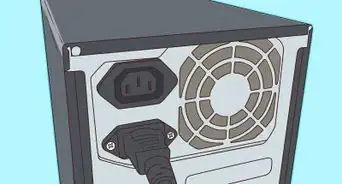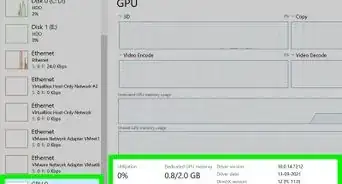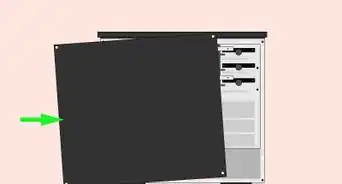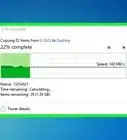This article was co-authored by Luigi Oppido and by wikiHow staff writer, Darlene Antonelli, MA. Luigi Oppido is the Owner and Operator of Pleasure Point Computers in Santa Cruz, California. Luigi has over 25 years of experience in general computer repair, data recovery, virus removal, and upgrades. He is also the host of the Computer Man Show! broadcasted on KSQD covering central California for over two years.
This article has been viewed 10,699 times.
There are many reasons why a flash drive won't work or will appear corrupted including physical and internal damage. This wikiHow will teach you ways that you can use to fix a corrupted flash drive without formatting it.
Steps
Scanning and Repairing a Flash Drive on Windows
-
1Plug your flash drive into your computer. The flash drive should fit into one of the rectangular USB ports on your computer's monitor, tower, or laptop's casing.
-
2Press ⊞ Win+E to open File Explorer . This opens File Explorer on Windows, and you can use File Explorer to navigate to your flash drive.Advertisement
-
3Right-click your flash drive's icon. Doing so prompts a menu to appear to the right of the drive.
- You may need to click > next to This PC first in order to view the flash drive.
-
4Click Properties. It's at the bottom of the menu that appears when you right-click a drive.
-
5Click the Tools tab. This option is at the top of the Properties window.
-
6Click Check. You'll see this button at the top of the Tools tab in the "Error checking" section.
-
7Wait for Windows to repair your drive. You may also need to follow some on-screen instructions during the repair process.[1]
- For example, you might need to confirm that you want to repair the drive by clicking Scan & Repair.
-
8Click Close when prompted. If your flash drive's problems were driver- or software-based, it should work now.
Scanning and Repairing a Flash Drive on Mac
-
1Plug your flash drive into your computer. The flash drive should fit into one of the rectangular USB ports on your Mac's monitor.
-
2
-
3Click the Go menu item. It's in the menu bar that runs along the top of your screen with the Apple logo.
-
4Click Utilities. It's an option near the bottom of the Go drop-down menu. Alternatively, you can press the keyboard shortcut Shift + Cmd + U to open Utilities.
-
5Double-click Disk Utility. It resembles a stethoscope on top of a hard drive icon.
-
6Select your flash drive. This is the indented icon below the "External" heading.
-
7Click First Aid. It's at the top of the Disk Utility window.[2]
-
8Click Run when prompted. It's the blue button on the pop-up window.
-
9Wait for the scan to complete. Disk Utility will repair any software- or driver-related problems.[3]
-
10Click Done when prompted. If your flash drive's problems were driver- or software-based, it should work now.[4]
-
11
Repairing Physical Damage
-
1Understand that physically repairing a flash drive is unlikely to work. Unless you have professional experience in repairing physically damaged flash drives, do not try to open it.
- If the flash drive's internal storage is damaged, your only viable option is to take the drive into a professional repair service.
- The prices for data recovery can vary from $20 - $850 based on the severity of damage to the drive, and the type of recovery required.
-
2Look for grit or foreign objects in the USB drive's mouth and your computer's USB port. It may not be able to connect because of an easily removed blockage. If you see something inside of the USB drive's mouth or the USB port on your computer, gently swab it out with a toothpick or a q-tip.
-
3Try testing the flash drive on another USB port or computer. It may be the USB port on your computer that isn't working rather than the USB drive itself.
References
- ↑ Luigi Oppido. Computer & Tech Specialist. Expert Interview. 31 July 2019.
- ↑ https://support.wdc.com/knowledgebase/answer.aspx?ID=866#macOSlate
- ↑ Luigi Oppido. Computer & Tech Specialist. Expert Interview. 31 July 2019.
- ↑ Luigi Oppido. Computer & Tech Specialist. Expert Interview. 31 July 2019.
About This Article
1. Plug your flash drive into your computer..
2. Press Win + E to open File Explorer.
3. Right-click your flash drive's icon.
4. Click Properties.
5. Click the Tools tab.
6. Click Check.
7. Wait for Windows to repair your drive.
8. Click Close when prompted.
